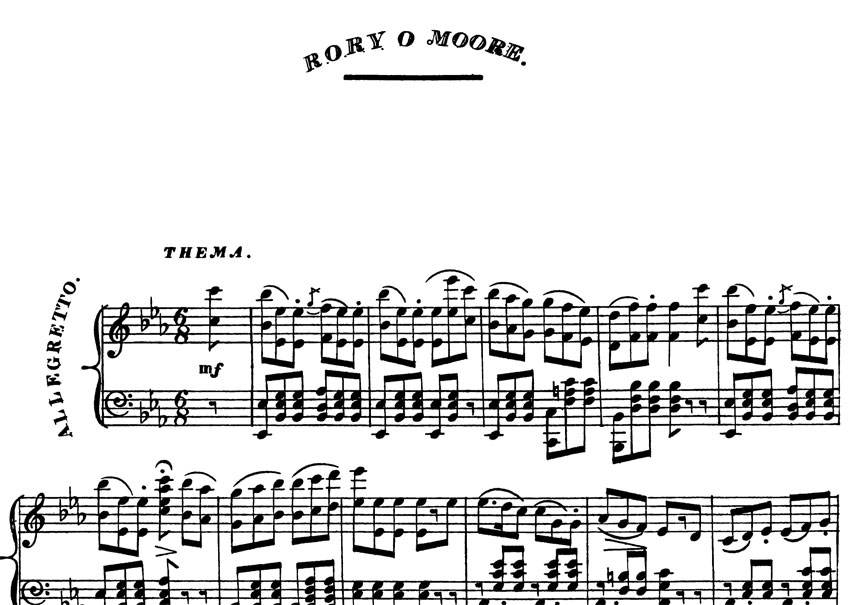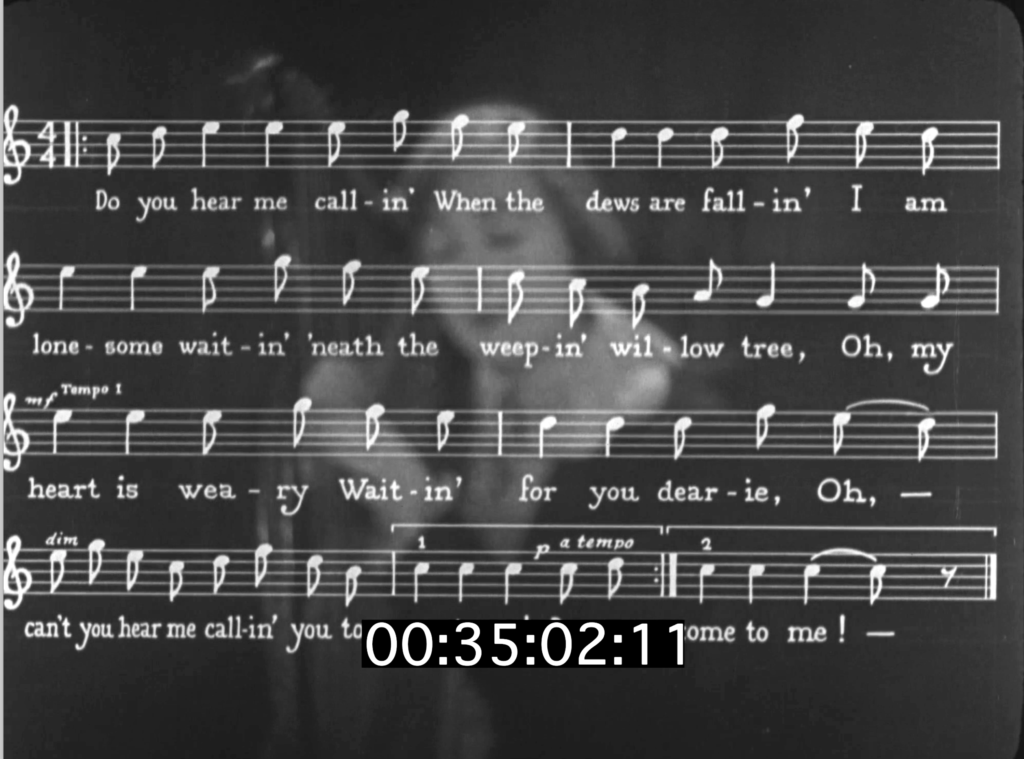One of the challenges in scoring a silent film is dealing with the fact that occasionally, there are musical numbers performed or sung. Often, the song is sung or performed in its entirety. In most cases it’s impossible to synch up anything you’re playing.
The exception, of course, is “The Prisoner’s Song” in Keaton’s Steamboat Bill, Jr. sung and pantomimed by Buster in a medium shot in a single sustained take. The tempo isn’t necessarily rock steady but if you keep your eyes on Buster’s face and hands, you can absolutely nail it.
What usually is the case, though, is that we are told or shown that a particular piece is going to be sung or performed and between the silent film speed-up and cuts that don’t honor the tempo, bar count or music there’s just no way to fit it.
It’s interesting to me that, considering everyone making movies in the 1920s knew their films were being shown faster in theaters than the speed they were shot at, they accommodated this and compensated in the pacing of their movements…except for dance numbers. They could very easily have danced 50-80% slower so their dancing wouldn’t read as quite so frantic. But no one ever did.
There are a few kinds of movements that are impossible to compensate for in making silent film, and they involve gravity. Because you have no control over gravity. And so, a lot of the dancing in silent films comes off looking like Benny Hill shot it. I had a decision to make with an Irish jig that Marion Davies performs in Little Old New York (1923) recently when creating and recording my score for the film.

It’s a specific piece of music, a request called out to her in an intertitle. She not only dances a full chorus or two of the tune, but is then joined by someone else in the crowd and they do at least one more time through the piece before Harrison Ford (no, not that one, the silent film one) interrupts the proceedings. The dance number actually looks like it had been cranked a bit slower than the rest of the film’s sequences. Or maybe it’s just that that’s what an Irish jig looks like 35% faster than real time.

It’s not like Sidney Olcott and the rest of the crew and performers were being careless about it. Because the other Irish folk tune in the film — real or otherwise — is sung by Marion in what looks like real-time speed.
She sings it twice in the film, and in one sequence it’s taken in a medium shot and Marion is deliberately mouthing the words as she sings. And, pretty much, there are very few jumps when they cut back and forth from Marion to Harrison and back. The shots of Marion look like they were cranked at around 90 feet per minute, whereas the rest of the film — including the aforementioned cutaways— is taken at 60 or 70.
For this number, since they went to the trouble of making sure Marion was singing the actual song, and that the scene was shot at a cranking speed that would allow us to see that, I went to the trouble of trying to synch up the music. I did the best I could anyway. The length Irish jig to “Rory O’Moore” however, is impossible to synch to the onscreen footage because of the speed.